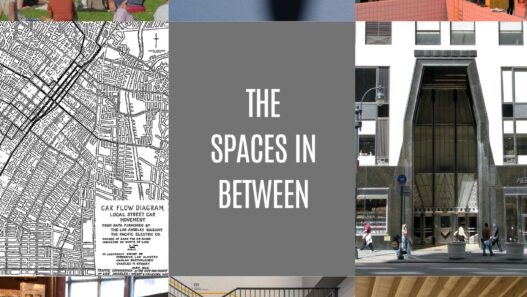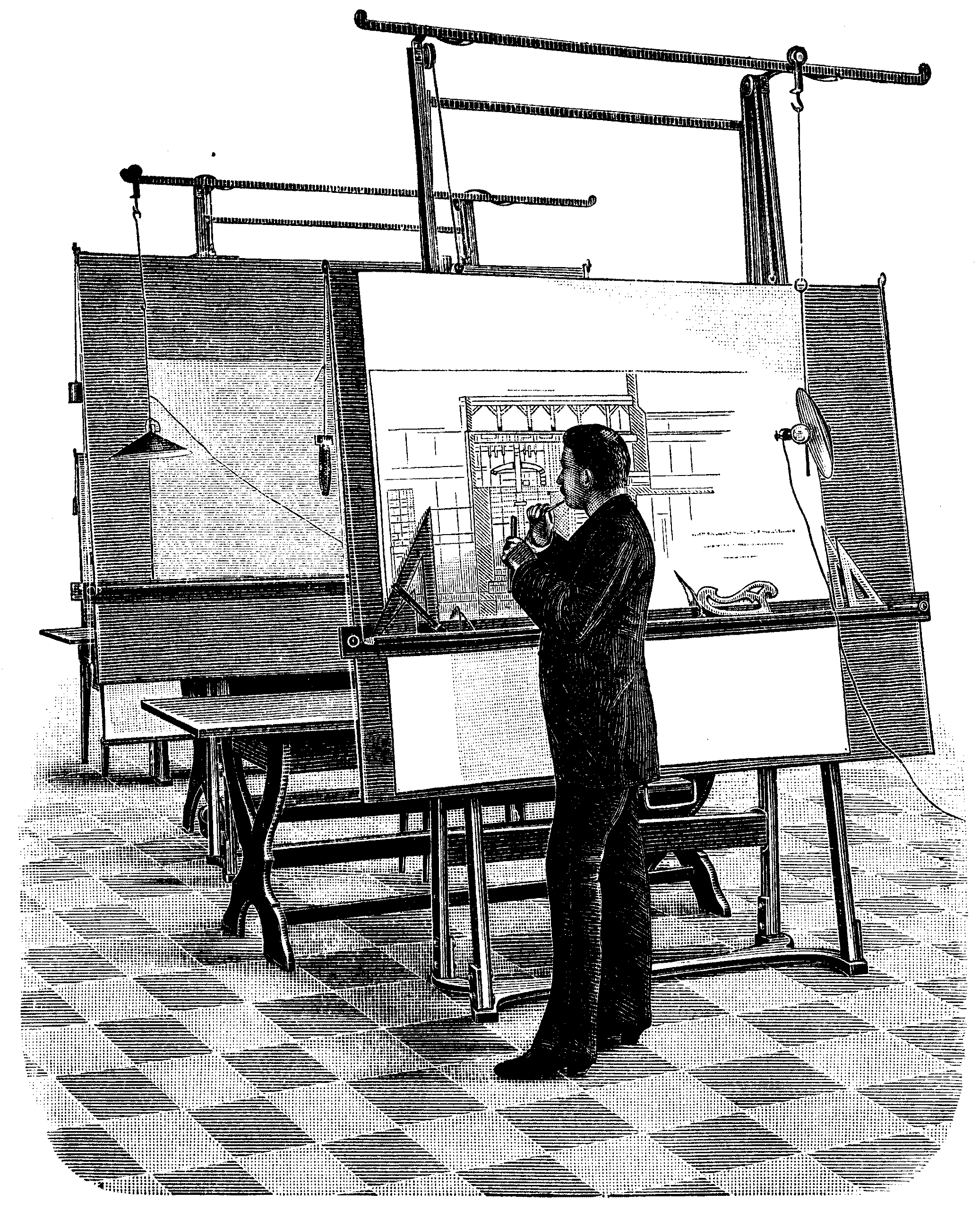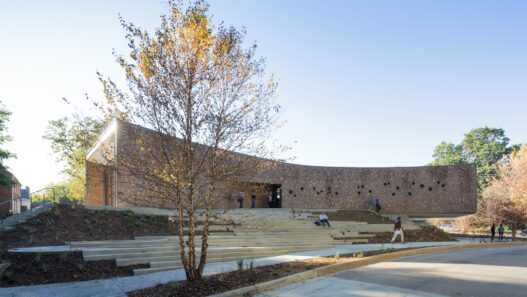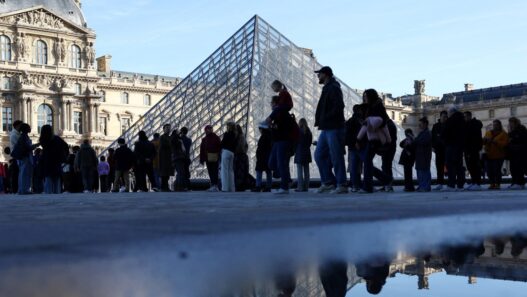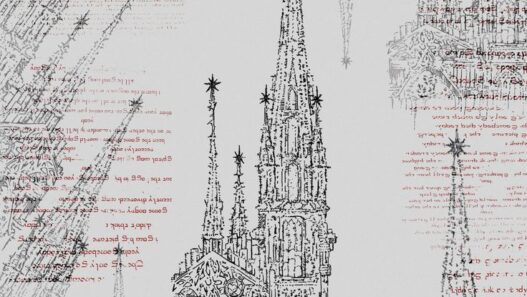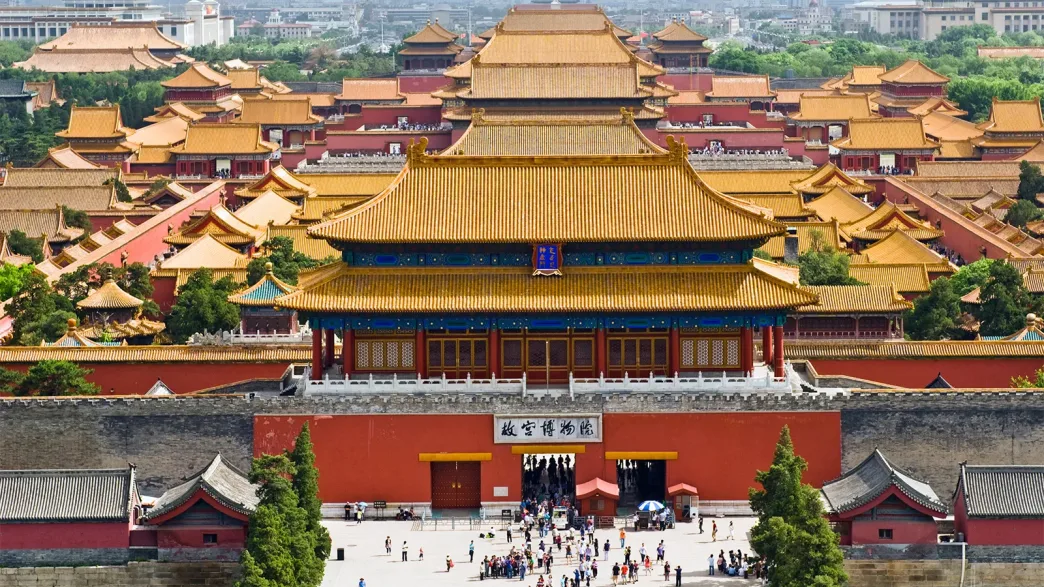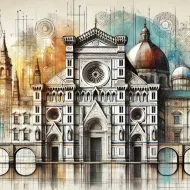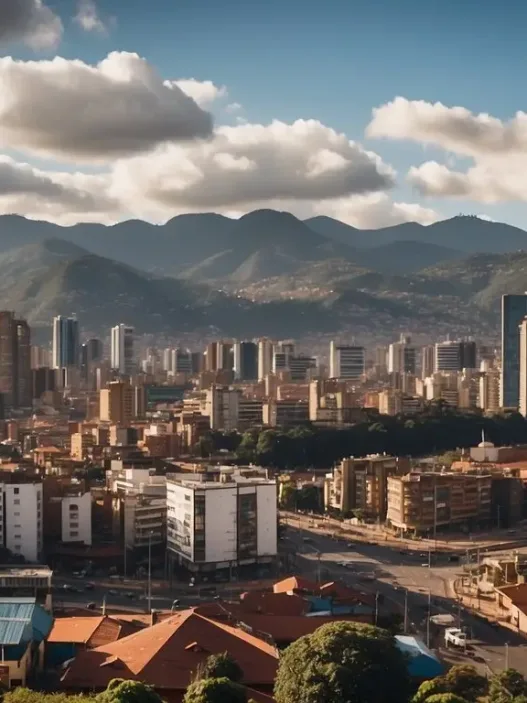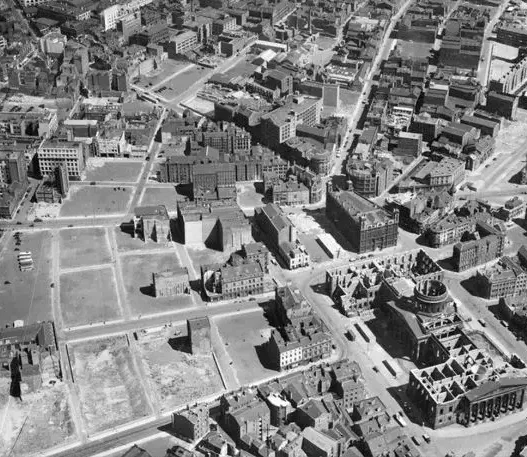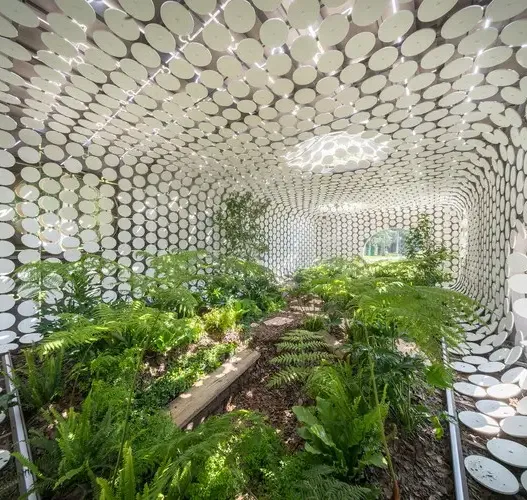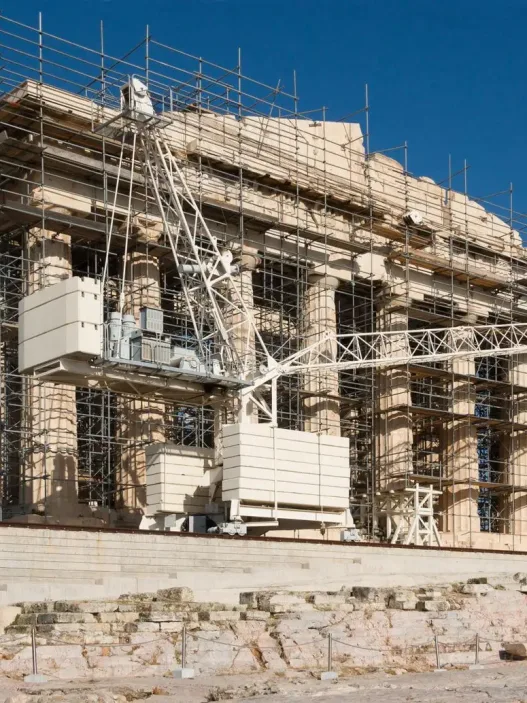Beijing, the capital of China, is a city where architectural styles of the past and present coexist in a vibrant tapestry. From the majestic Forbidden City to the sleek lines of modern skyscrapers, the city’s architectural landscape tells a story of cultural evolution, political power and innovation. As we explore Beijing’s architecture, we will uncover the layers of history that have shaped its identity, the importance of these structures in Chinese culture, and the fascinating contrasts between ancient imperial designs and contemporary urban planning.

Historical Overview
Beijing’s architectural history spans over three millennia, marked by the rise and fall of dynasties. Originally founded as a small village during the Zhou Dynasty, the city became the capital of the Yuan Dynasty under Kublai Khan in the 13th century. This period brought grand designs, including a city layout that emphasized symmetry and hierarchy. The Ming and Qing Dynasties further enriched Beijing’s architectural heritage, exemplified by the construction of the Forbidden City, a vast palace complex that served as the home of emperors and a symbol of imperial authority.
The city’s architecture reflects its turbulent history, including periods of war and reconstruction. Each dynasty left its mark, contributing to a unique blend of styles that includes traditional wooden structures, intricate carvings and spacious courtyards. Today, remnants of this rich history coexist with modern developments, creating a unique urban landscape.
The Importance of Architecture in Chinese Culture
In Chinese culture, architecture is deeply intertwined with philosophy, spirituality and social structure. Traditional Chinese architecture emphasizes harmony with nature, as seen in the use of natural materials and the incorporation of garden and water features. The concept of Feng Shui plays an important role in design, influencing the orientation and layout of buildings to promote balance and positive energy.
Moreover, architecture serves as a reflection of societal values. The grandeur of palaces and temples symbolizes power and reverence, while residential architecture reveals insights into daily life and family structure. The preservation of historic sites alongside modern structures in Beijing emphasizes respect for heritage while embracing progress.
The Contrast Between Ancient and Modern
The sharp contrast between ancient and modern architecture in Beijing is a striking feature of the city. Ancient buildings such as the Temple of Heaven and the Summer Palace showcase traditional design elements such as curved roofs, vibrant colors and intricate ornamentation reflecting centuries-old craftsmanship. These buildings are not just relics; they are living symbols of Chinese history and culture.
In contrast, modern architecture in Beijing embraces innovation and international styles. The iconic CCTV Headquarters and Bird’s Nest Stadium exemplify this shift, with bold, avant-garde designs that challenge traditional aesthetics. This juxtaposition raises questions of identity and modernization as the city turns towards its historical roots while stepping confidently into the future.
Key Themes to Explore
We will explore how historical events influence architectural styles, the role of architecture in shaping cultural identity, and the challenges of preservation in a rapidly modernizing city. We will also highlight important examples of both ancient and contemporary architecture, showing how these structures contribute to the overall narrative of Beijing as a city that honors its past while embracing its future. Through this exploration we hope to illuminate the beauty and complexity of Beijing’s architectural landscape.
A city steeped in history, Beijing is a living testament to both ancient imperial architecture and the rapid growth of a modern metropolis. The juxtaposition of these two worlds creates a unique cultural landscape where centuries-old structures stand side by side with contemporary skyscrapers. This exploration begins with a deep dive into the ancient imperial architecture that shaped Beijing’s identity.
Ancient Imperial Architecture
Ancient imperial architecture in Beijing is characterized by its grandeur and intricate design, reflecting the values and beliefs of the dynasties that ruled China. These structures were not just functional; they were symbols of power and authority, designed to impress both the public and foreign envoys. The architecture often incorporates the principles of Feng Shui and Chinese cosmology and emphasizes harmony between the built environment and nature.
Forbidden City
The Forbidden City is perhaps the most iconic example of ancient imperial architecture in Beijing. Built in the early 15th century during the Ming Dynasty, this vast palace complex served as the ceremonial and political center of the Chinese emperors for almost a century. The layout of the Forbidden City was meticulously planned with a clear hierarchical structure reflecting the Confucian values of the time. Visitors enter through the Meridian Gate and pass through a series of courtyards, each more magnificent than the last, to reach the Inner Courtyard, where the emperor and his family live.
The architecture of the Forbidden City is notable for its vibrant colors, intricate decorations and symbolic motifs. For example, red walls and yellow roofs signify happiness and imperial authority respectively. The use of wooden beams and brackets demonstrates the advanced construction techniques of the time. Today the Forbidden City is not only a UNESCO World Heritage Site, but also a museum that attracts millions of visitors each year who want to learn about China’s imperial history and culture.
Temple of Heaven
Another important architectural marvel in Beijing is the Temple of Heaven, built during the Ming Dynasty in the early 15th century. This complex served as a place where emperors performed rituals to ensure good harvests and divine favor. The design of the Temple of Heaven is both striking and highly symbolic. The main hall, known as the Hall of Prayer for Good Harvests, has a circular design representing heaven, while the square base symbolizes earth, embodying the ancient Chinese belief in harmony between the two realms.
Equally important is the layout of the Temple of Heaven, with a series of paths and altars arranged to emphasize its spiritual significance. The use of color, especially the blue tiles of the Prayer Hall, represent the sky and the heavens. The Temple of Heaven remains a popular destination for both tourists and locals who often gather in the surrounding park to practice Tai Chi, dance and enjoy the tranquil atmosphere.
Summer Palace
Another jewel of Beijing’s architectural heritage, the Summer Palace was built in the mid-18th century and served as a royal retreat. This vast garden complex is famous for its beautiful landscapes, intricate pavilions and stunning Kunming Lake. The design of the Summer Palace is a masterful blend of natural beauty and architectural elegance, with each building carefully positioned to complement the surrounding environment.
The Summer Palace demonstrates the Qing Dynasty’s appreciation of nature and leisure. The Long Corridor, adorned with thousands of paintings, serves as a picturesque walkway connecting the various pavilions and viewpoints. Visitors can experience the tranquility of the gardens and the splendor of the architecture, as well as a glimpse into the cozy pursuits of Chinese emperors.
Ming and Qing Dynasty Influences
The architectural styles of the Ming and Qing Dynasties have left a lasting impression on Beijing’s urban landscape. During the Ming Dynasty, buildings were constructed with an emphasis on symmetry, balance and grandeur. The use of high walls, ornate roofs and elaborate ornamentation became hallmarks of this period. In contrast, the Qing Dynasty brought together elements from Tibet, Mongolia and the West, resulting in a more diverse style and a rich tapestry of architectural influences.
The contributions of these dynasties can be seen not only in palaces and temples, but also in lesser-known structures in Beijing, including the traditional courtyard houses or Siheyuan, which reflect communal living and family ties. The blending of styles and influences from various regions has created a unique architectural language that continues to evolve.
Preservation of Ancient Buildings
As Beijing continues to modernize, the preservation of its old buildings has become increasingly important. Many historic sites face challenges from urban development, pollution and tourism pressure. Efforts to protect these architectural treasures have intensified with initiatives aimed at restoring and maintaining their integrity.
The government and various organizations have recognized the cultural importance of these sites and have taken measures to protect them. Restoration projects often use traditional techniques and materials to ensure authenticity. In addition, public awareness campaigns aim to educate citizens and tourists on the importance of preserving Beijing’s rich architectural heritage. By prioritizing preservation, Beijing aims to balance its historical heritage with the demands of modern urban life.
As a result, ancient imperial architecture in Beijing is a fascinating blend of history, art and cultural significance. From the grandeur of the Forbidden City to the serene beauty of the Summer Palace, these structures tell the story of a civilization that flourished over thousands of years. As Beijing embraces its future as a modern metropolis, the preservation of these ancient sites ensures that the legacy of the imperial past will continue to inspire future generations.
Modern Architectural Wonders
One of the world’s most dynamic cities, Beijing is a fascinating mix of ancient traditions and the latest innovations. In recent years, the city’s skyline has been transformed by extraordinary modern architecture that reflects both the city’s aspirations and its unique cultural heritage. These structures not only serve functional purposes, but also stand as symbols of progress and creativity in a rapidly evolving urban environment.
Bird’s Nest (National Stadium)
The Bird’s Nest, officially known as the National Stadium, is an iconic structure that originated at the Beijing Olympics. Designed by Swiss architecture firm Herzog & de Meuron in collaboration with artist Ai Weiwei, its striking facade resembles an intricate nest made of steel and glass. The design not only offers a visually mesmerizing experience, but also reflects the cultural importance of unity and nature in Chinese philosophy.
The stadium is an architectural and engineering marvel with a seating capacity of 80,000 people. It showcases advanced construction techniques and a commitment to sustainability, with a rainwater harvesting system and energy-efficient lighting. Beyond its role in the Olympics, the Bird’s Nest has become a vibrant part of Beijing’s urban fabric, hosting a variety of sporting events, concerts and cultural activities.
Water Cube (National Aquatics Center)
Adjacent to the Bird’s Nest, the Water Cube, or National Aquatics Center, is another masterpiece of modern architecture. Designed by Australian firm PTW Architects, the building’s exterior consists of ethereal, bubble-like panels that mimic the appearance of water. This innovative design is not only mesmerizing to the eye, but also serves a functional purpose, as the panels are made of ETFE, a lightweight and durable material that allows natural light to flood the interior spaces.
During the Olympics, the Water Cube was the scene of exciting swimming competitions and became famous for its state-of-the-art facilities. Today, it operates as a public pool and recreation center featuring water slides and a variety of water sports. The building stands as a testament to Beijing’s commitment to creating multifunctional spaces that enhance community life.
Central China Television Headquarters (CCTV)
The Central China Television Headquarters, often referred to as the CCTV Tower, is a striking example of contemporary architecture that defies traditional building forms. Designed by Dutch architect Rem Koolhaas and his firm OMA, it features an unusual looped design that defies gravity and creates a sense of movement. The building’s unique shape has earned it numerous awards and recognitions in the architectural community.
The CCTV Headquarters is not only an icon of modern design, but also serves as the headquarters of China’s national television network. The expansive glass façade symbolizes transparency and openness, reflecting the evolving media landscape in China. The building incorporates environmentally sustainable features such as natural ventilation and rainwater recycling, emphasizing the importance of green architecture in urban environments.
Museum of Urban Planning
The Museum of Urban Planning in Beijing serves as a vital link between the city’s past, present and future. This museum showcases the evolution of Beijing’s urban landscape, emphasizing the balance between historical preservation and modern development. The building itself is a modern architectural gem with a sleek and contemporary design that invites visitors to explore the city’s transformation.
Exhibits in the museum include detailed models of historic and planned developments, interactive displays and multimedia presentations that engage the public in discussions about urban design and sustainability. This museum plays an important role in educating citizens and policymakers about the importance of thoughtful urban planning as Beijing continues to grow.
Innovative Use of Technology in Design
Beijing’s modern architectural landscape is characterized by the innovative use of technology in building design. Architects and engineers are increasingly utilizing advanced materials and construction techniques to create sustainable, efficient structures. For example, the integration of smart technology allows buildings to optimize energy use, adapt to environmental changes and improve occupant comfort.
Furthermore, the use of virtual reality and computer-aided design has revolutionized the planning process, enabling architects to visualize projects in immersive detail before construction begins. This technological advancement not only increases efficiency, but also encourages creativity, allowing architects to push the boundaries of design.
As a result, Beijing’s modern architectural marvels reflect a city in transition, where tradition meets innovation. They not only serve practical purposes, but also inspire and engage the public by demonstrating the potential of architecture to shape urban life in meaningful ways. As Beijing continues to develop, its architectural landscape will undoubtedly remain a source of inspiration and pride.
Cultural Importance of Architectural Styles
Architecture in Beijing is not just about buildings; it embodies the rich tapestry of Chinese culture, history and philosophy. The city’s architectural styles tell the stories of past dynasties, reflect the values of society and shape the modern identity of its residents. Whether ancient or contemporary, each building functions as a dialog between the past and the present, revealing the cultural significance inherent in architectural practices.
Symbolism in Traditional Chinese Architecture
Traditional Chinese architecture is full of symbolism and every element is designed to convey a deeper meaning. The use of colors, materials and even the layout of buildings is deliberate. For example, red is often used to connote happiness and prosperity, while yellow represents the emperor and imperial power. Roofs are typically curved, symbolizing the sky and the connection between heaven and earth.
Settlement in the Forbidden City was meticulously organized according to Confucian principles, emphasizing hierarchy and order. The central axis represents the supreme authority of the emperor, while the arrangement of buildings reflects the structure of society. This symbolism extends beyond aesthetics; it functions as a narrative that expresses the values and beliefs of the culture through physical form.
The Role of Feng Shui
Feng Shui, the ancient Chinese practice of spatial organization and orientation, plays a crucial role in the design of buildings in Beijing. This philosophy emphasizes harmony between individuals and their environment. Architects and planners consider natural elements such as wind, water and the surrounding landscape to create spaces that promote positive energy or “chi”.
In Beijing, traditional houses, palaces and even modern buildings are often designed with Feng Shui principles in mind. For example, the placement of doors and windows is not arbitrary; it is done strategically to optimize the flow of energy and thus enhance the well-being of its inhabitants. This connection with nature and the cosmos reflects a deep-rooted belief in balance and harmony that remains an integral part of both ancient and contemporary architecture.
Modern Interpretations of Tradition
Beijing’s skyline is a fascinating mix of old and new. While ancient structures such as the Temple of Heaven stand as testaments to traditional craftsmanship, modern architects are taking inspiration from these historic elements to create innovative designs that resonate with contemporary life.
For example, the National Stadium, known as the Bird’s Nest, integrates traditional Chinese motifs with the latest technology and sustainable practices. Its design reflects organic forms found in nature, reminiscent of traditional pavilions, while pushing the boundaries of modern architecture. This fusion shows how architects not only preserve the past, but also reinterpret it in a way that appeals to current and future generations.
Impact of Global Architectural Trends
As Beijing transforms into a global metropolis, it is increasingly influenced by architectural trends from around the world. The influx of international architects has led to a unique architectural dialog, bringing different styles and innovative techniques. High-rise buildings such as the CCTV Headquarters engage with cultural narratives while showcasing avant-garde design principles that challenge traditional aesthetics.
The blending of global influences with local traditions creates a dynamic architectural landscape. It allows for the emergence of hybrid structures that maintain cultural relevance while embracing modernity. The result is a city that confidently steps into the global arena of contemporary architecture while reflecting its historical roots.
Architectural Competitions and Their Impact
Architectural competitions have become a vital part of Beijing’s urban development, encouraging creativity and innovation. These competitions often attract world-renowned architects and lead to groundbreaking designs that redefine the city’s skyline. The Bird’s Nest and the Water Cube, both built for the Olympics, are prime examples of how competition can spur spectacular architectural achievements.
Through these competitions, Beijing not only demonstrates its claim to be a leader in global architecture, but also emphasizes the importance of collaboration and creative dialogue. The projects that emerge from these events often incorporate local cultural elements, ensuring that the city remains true to its rich heritage even as it modernizes.
As a result, the cultural significance of Beijing’s architectural styles is immense. They emphasize the interplay between tradition and modernity, reflecting the city’s historical depth and leading it into the future. As Beijing continues to grow and develop, its architecture will undoubtedly continue to be a powerful expression of its unique identity and cultural narrative.
Beijing is an extraordinary tapestry woven from ancient imperial heritage and the vibrant pulse of modern urban life. With a history spanning over three millennia, the city is home to breathtaking palaces, temples and historic sites, while also embracing the challenges and innovations of contemporary architecture and urban planning. As Beijing continues to grow, it faces significant challenges in urban development, particularly in balancing the demands of modernization with the preservation of its rich cultural history.
Urban Development Challenges
As one of the most populous cities in the world, Beijing’s urban development is a complex and multifaceted issue. The challenges are not only about constructing new buildings, but also about creating a harmonious environment where history and modernity coexist. Understanding these challenges sheds light on the ongoing dialogue between past and future in this bustling metropolis.
Balancing Preservation and Modernization
The juxtaposition of ancient structures and modern buildings in Beijing creates a unique architectural landscape. Iconic landmarks such as the Forbidden City and the Temple of Heaven are not only historical treasures but also symbols of national identity. But as the city modernizes, the pressure for new infrastructure and housing development increases. The challenge is to strike a balance between preserving these historic sites and meeting the needs of a growing population.
Efforts to maintain this balance often involve strict regulations on renovation and construction near heritage sites. For example, projects near the Forbidden City must follow rules that respect the historic integrity of the area. This delicate dance between conservation and modernization is crucial for preserving the cultural fabric of the city while at the same time meeting contemporary needs.
Addressing Environmental Concerns
As Beijing expands, environmental concerns are increasingly coming to the fore. Rapid urbanization has led to significant air pollution, water scarcity and waste management problems. Urban development projects must now incorporate sustainable practices to reduce these environmental impacts.
For example, green architecture is gaining traction, with new buildings designed to minimize their ecological footprint. The use of renewable energy sources, rainwater harvesting systems and energy-efficient materials are becoming standard in new construction. Furthermore, Beijing’s commitment to creating more green space, such as parks and gardens, helps counteract the urban heat island effect and improves the overall quality of life for its residents.
Managing Population Growth and Urban Sprawl
With a population of over one million, managing growth is a daunting task for urban planners. The influx of people seeking opportunities in the capital has led to urban sprawl, where the city has expanded outward, often at the expense of farmland and natural habitats. This expansion creates challenges in terms of providing adequate housing, transportation and public services.
To combat these problems, Beijing is investing in the development of satellite cities and encouraging vertical living through high-rise apartment buildings. These strategies aim to contain urban sprawl while creating self-sufficient communities that reduce pressure on the city center. Furthermore, improving public transportation, such as the expansion of the metro system, helps connect these satellite areas to the city center.
Infrastructure and Transportation Issues
While Beijing’s infrastructure is constantly improving, it faces significant challenges, especially in the area of transportation. As the city grows, so does the demand for efficient public transportation. Traffic congestion is a daily reality for many city dwellers, leading to frustration and lost productivity.
To address this problem, Beijing has made significant investments in its public transportation network, including an extensive subway system, one of the largest in the world. This network not only helps alleviate traffic, but also reduces carbon emissions. The city also encourages cycling and walking as sustainable alternatives by developing dedicated bicycle lanes and pedestrian-friendly zones.
Community Participation in Urban Planning
Involving the community in urban planning is crucial to creating a city that truly reflects the needs and desires of its residents. Historically, decisions on urban development in Beijing have often been made top-down, with little input from the public. However, the importance of community participation is increasingly recognized.
Initiatives inviting residents to participate in the planning process are becoming increasingly common. Public forums, workshops and online platforms allow citizens to voice their opinions and contribute to the shaping of their neighborhoods. This participatory approach not only fosters a sense of ownership among residents, but also enables more informed and effective urban planning decisions.
In conclusion, Beijing’s urban development challenges are complex and require a multifaceted approach. Balancing the preservation of rich heritage with the demands of modern life, addressing environmental concerns, managing population growth, and engaging the community are critical to shaping the future of this ancient yet ever-evolving metropolis. As Beijing overcomes these challenges, it remains a living example of how history and modernity can coexist and thrive.
Conclusion and Future Perspectives
When we reflect on Beijing’s architectural landscape, we find a fascinating mix of ancient imperial structures and cutting-edge modern designs. Steeped in history yet alive with contemporary innovation, this city offers a unique lens through which to examine the evolution of architecture. In this concluding chapter, we will summarize the key points discussed, explore the future of architecture in Beijing, consider potential developments on the horizon, distill lessons learned from the architectural journey, and invite readers to engage with these themes.
Summary of Key Points
Throughout our exploration, we saw how Beijing’s architecture tells the story of its past and present. The grandeur of the Forbidden City and the Temple of Heaven point to the city’s imperial roots, showcasing intricate designs and philosophies emphasizing harmony and balance. In contrast, modern structures such as the CCTV Headquarters and the Bird’s Nest Stadium demonstrate Beijing’s embrace of innovation and globalization. This dynamic interplay between tradition and modernity not only defines the city’s skyline, but also enriches its cultural fabric.
The Future of Architecture in Beijing
Looking ahead, the future of architecture in Beijing is set to be an exciting chapter in its ongoing story. As the city grapples with rapid urbanization and environmental challenges, architects and urban planners are increasingly prioritizing sustainability and livability. This shift towards eco-conscious design reflects a broader global trend focusing on green buildings and smart city initiatives. These developments aim to improve the quality of life for residents while preserving the historic essence of the city.
Potential Developments on the Horizon
Some potential developments could reshape Beijing’s architectural landscape in the coming years. The city’s commitment to sustainable urban planning, including the creation of green spaces and pedestrian-friendly zones, promises to promote a healthier urban environment. Moreover, advances in technology and materials can lead to even more innovative designs that challenge traditional architectural norms. Projects that integrate historic preservation with modern functionality are likely to emerge, creating spaces that reflect both the past and the future.
Lessons from Beijing’s Architectural Journey
Beijing’s architectural journey teaches us valuable lessons about balance and adaptation. The city’s ability to honor its rich history while embracing modernity exemplifies the importance of context in design. It reminds us that architecture is not just about buildings, but about creating spaces that reflect cultural values and enhance community well-being. Furthermore, integrating sustainable practices into architectural design emphasizes the need to respond to environmental challenges by ensuring that future developments are both innovative and responsible.



